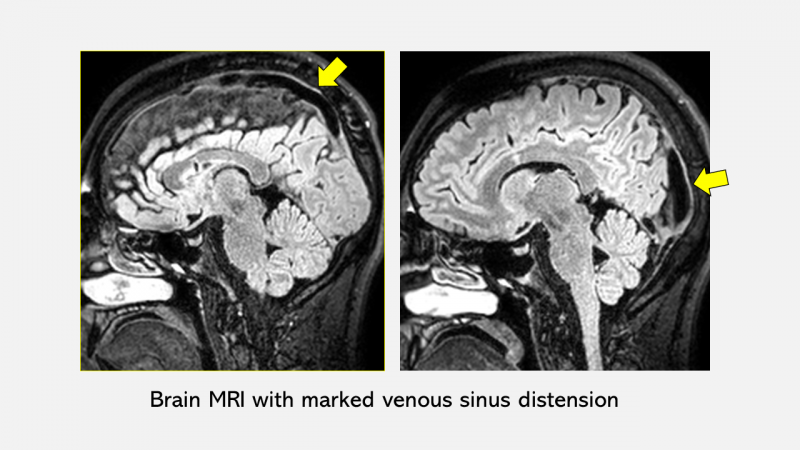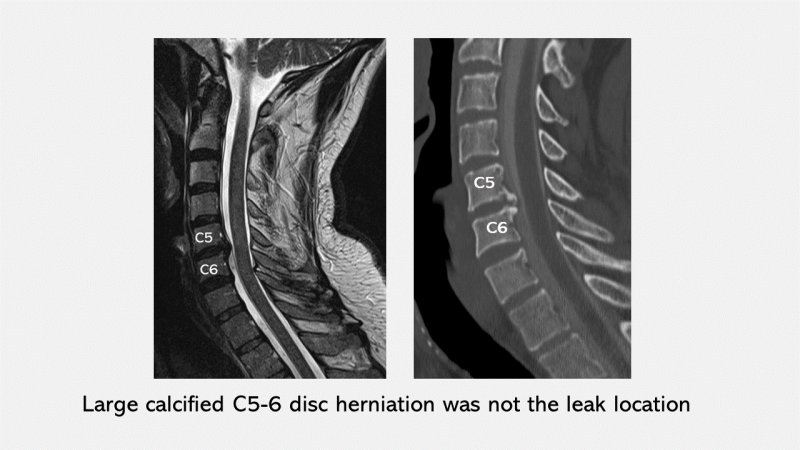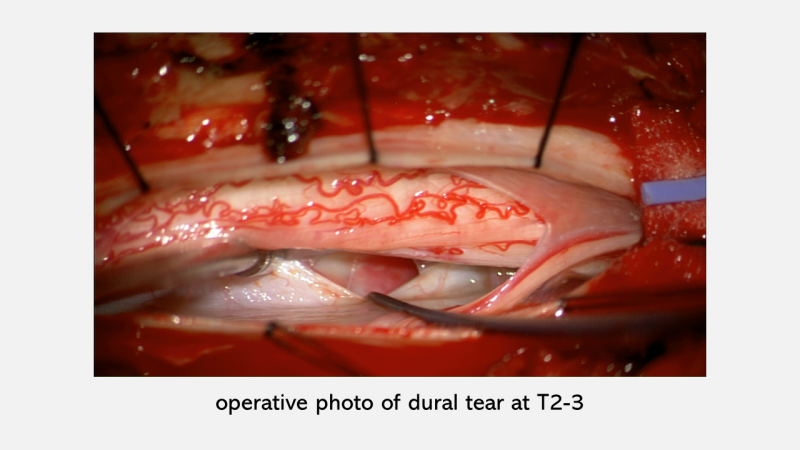Alex played in a softball league with other fathers from his children’s school. After one particularly strenuous game, he began to feel a nagging ache in the back of his head. By the next morning, it had intensified into a knife-like pain, a terrible headache unlike any he had never experienced before. It would be almost four years before his head pain was cured.
After Alex’s head pain set in, shortly after playing a game with his softball league, he began to notice other strange symptoms: fatigue, vertigo, extreme sensitivity to barometric pressure changes and electrical storms. A month later, he went to see a local neurologist, who recommended he have a brain MRI.
The MRI showed small subdural hematomas, blot clots pressing on his brain, and his lumbar puncture pressure measurement was low. But even though these were classic indications of intracranial hypotension, he was not yet definitively diagnosed with a spinal CSF leak. Unfortunately, the doctors first pursued imaging to look for a CSF leak in his head and not in his spine. He was treated with two epidural blood patches, which did not help.
His head pain and other symptoms continued over the next 3 years, unabated. He was treated with a variety of treatments normally used for migraine headaches, including a class of medications called triptans, Botox injections, and an electrical stimulation device approved for use in patients with migraine. None of these helped.
Meanwhile, Alex was unable to function at his normal high level, which was difficult for him to adjust to. His teenaged children were old enough to understand and accommodate his limitations, but Alex hated how much he missed out on with them. Evenings, weekends, meets, presentations, family trips; he wasn’t able to participate in much of it anymore. The previous active family life they’d all enjoyed was turning into a thing of the past.
After three years of suffering with debilitating pain, Alex was beginning to lose faith in becoming well ever again. He was at his lowest point, and felt almost ready to give up. But, inspired by his kids and family, who had stood by him throughout, he became determined to find a medical solution. He reached out to a friend whom he thought might be able to connect him to the right medical professionals, and, thankfully, that friend came through.
Alex was able to see a headache neurologist, who was able to refer him to a team of experts with

(spontaneous intracranial hypotension)

Surgical repair was recommended, and Alex was elated to finally have a plan that could result in his long nightmare

Alex had surgery, which went well. He had thought that the surgery would be the end of his head pain, but he quickly learned that he was mistaken. Like many spinal CSF leak patients, Alex experienced significant rebound intracranial hypertension after his leak repair. For him, this felt like a much worse headache than his low-pressure leak headache. It was constant and unrelenting, and it felt like his head was in a vise from morning ‘til night. His high-pressure headaches were treated with medication, which came with its own side effects, but as time passed the pressure gradually began to abate. Still, several months after his surgery, some high-pressure head discomfort remains, which Alex manages by sleeping with his head in an elevated position, and avoiding alcohol and vigorous exercise.
Overall, Alex feels markedly better, on the way to full recovery. His head is clear, and he’s active and productive again at work and with his family. He credits his access to expert medical care, his flexible work environment, and the support of his family, especially his wife of 18 years, who managed everything while he was ill. Now that he’s better, he wants to be a resource for others. He wants every patient to have the kind of information and access he has, and for every patient to be diagnosed and treated as quickly as possible.
Low familiarity with spontaneous intracranial hypotension (SIH) due to spinal CSF leak contributes to diagnostic delays and errors in diagnostic evaluation. In Alex’s case, imaging for a CSF leak in his head was one such error. Then despite brain imaging evidence of SIH AND a low CSF pressure measurement, the diagnosis was put aside. He was treated for 3 years with migraine treatments, which are almost universally ineffective for patients with SIH. Had he not actively pursued another opinion, he might still be suffering with so many restrictions in his day to day life. Alex encourages neurologists to become more familiar with SIHdue to spinal CSF leak, such that patients might receive the diagnostics and treatments that can lead to a cure.
Our team at Spinal CSF Leak Foundation wishes to extend our appreciation of all those physicians working so hard to help patients, as well as those who assisted with this feature story.
#spinalCSFleak #becauseyourduramaters

